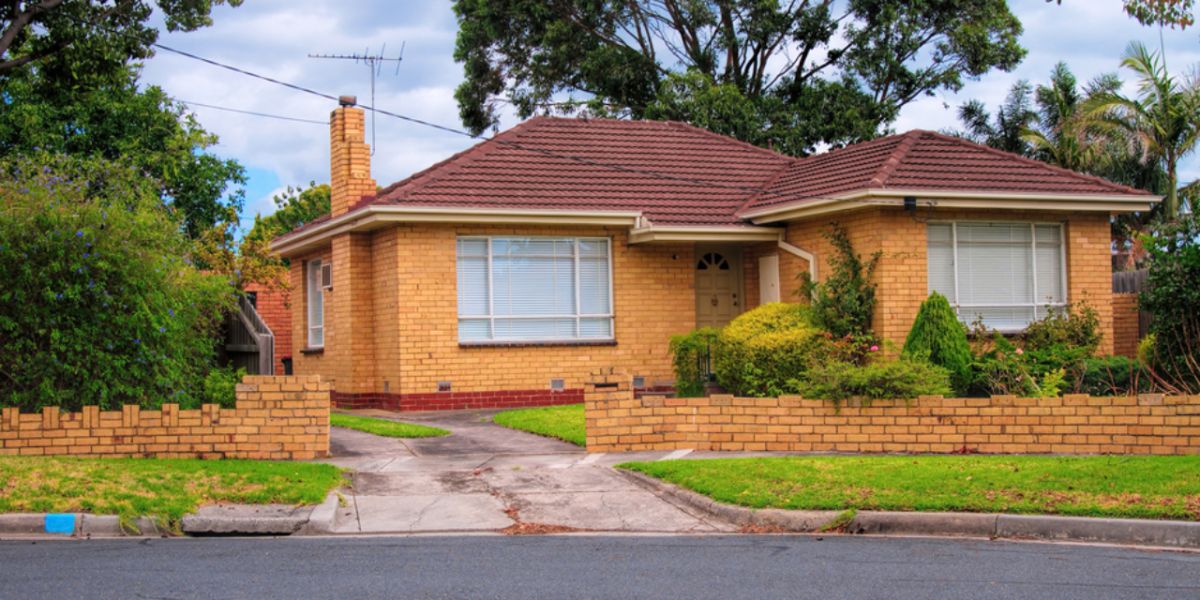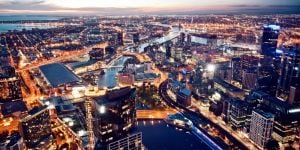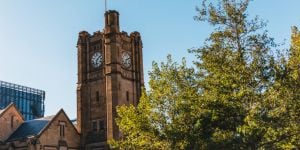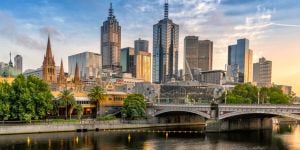
Melbourne is the second-largest city in Australia, located in the southeastern part of the country. The capital of Victoria is renowned for its great food, nightlife and art scene and is often described as being similar to European cities in terms of its cultural offerings and lively urban atmosphere. As Melbourne is a popular destination for international students and expats, you'll need to prepare for a bit of competition when you're looking for a place to live. Indeed, accommodation in Melbourne can be expensive for renters and buyers, but with a bit of research, you can find something that works for you.
Melbourne's rental market
Although rents in Australia rose by 4.8% in 2024 and 1.7% at the start of 2025, Victoria is considered the most affordable state in the country for renters.
Melbourne is now the second-cheapest city in Australia for renting.
At the end of 2024, the median rent in Melbourne was AUD 570 (USD 369) per week.
Types of accommodation in Melbourne
When you are looking for somewhere to live in Melbourne, you'll be inspecting apartments (flats) or houses. You might also be looking to rent a room in a share house, which is a great way to meet new friends and keep down the costs. Melbourne has a variety of options to choose from, including older Edwardian and Victorian-era homes, modern townhouses, contemporary apartments and older-style flats.
How to find accommodation in Melbourne
Online tools are usually all you need to find available listings. Websites like Realestate.com.au, Domain.com.au, Rent.com.au, Homely.com.au, and Gumtree.com.au all feature properties for rent and times that the listed houses or apartments will be open for inspection.
Word of mouth is also a great way to find places to stay in Melbourne, so put the word out to your social network, in Facebook groups, or on notice boards, and see if you find anything suitable. This can be a great way to avoid the hassle of competitive inspections. Another way of finding a suitable rental is to visit the websites of local real estate agents and browse their listings.
However, most people find a place to rent via advertised open-for-inspection times. If possible, try to view rental properties within office hours (between 9 am and 5 pm). These are typically quieter times, allowing you to establish a rapport with the real estate agent. Attach a cover letter to your application. This doesn't need to be long and extensive – a simple introduction of who you are and what you do is fine, but it will help you stand out among the other applicants.
Flat sharing in Melbourne
A flat share can be a great way to save money if you are a backpacker, student, or simply looking for a good way to meet people in Melbourne. Flat sharing allows you to share your apartment and the costs with another person or persons. The conditions of flat sharing in Melbourne can vary, meaning there are opportunities for both short-term and long-term stays, as well as the number of people you can share with. Flat sharing can also be easier when looking for a place to live, as it is a less formal process and generally doesn't require references or waiting for an inspection. The decision is usually made by the occupants of the house and asking them questions when you view the property allows you to get a good idea of their expectations. Good flat share websites in Melbourne include Flatmates, Flatmate Finders and Gumtree.
Short-term rental options in Melbourne
Short-term rental options can be an excellent solution for those who are waiting for their ideal long-term housing to become available. One option is to consider Airbnb hosts who offer month-long stays. These can be more flexible than traditional short-term rentals. You can even approach Airbnb hosts who do not advertise this option on their listing with the proposal of a longer stay.
Another option to consider is house swapping, which involves exchanging homes with someone else for a predetermined duration. This can be a cost-effective means to experience a different area of Melbourne while enjoying the comforts of a home away from home. However, you need to obtain permission from your landlord to do so, so it's best to examine your tenancy agreement to see if there is a clause about house swapping. Websites like HomeExchange facilitate house swaps and can help connect you with others in Melbourne interested in exchanging homes.
Student accommodation in Melbourne
Melbourne is home to many international students, and there are numerous options available for student accommodation. One popular choice for international students is on-campus accommodation. Most universities in Melbourne offer student dormitories or residential colleges that provide students with a safe and supportive environment in which to live while studying. These accommodations are usually within walking distance of campus facilities, making them a convenient choice for students who want to be close to their classes and activities. However, they may lack the excitement and cultural experience of sharing with locals.
Off-campus options for student accommodation in Melbourne include share houses and apartments, homestays, and purpose-built student accommodation (PBSA). Share houses and apartments are a great option for students who want to live with others and share the cost of rent and bills. Homestays offer students the opportunity to live with a local family and experience the culture of Melbourne firsthand.
When budgeting for student accommodation in Melbourne, it is crucial to factor in additional expenses, including groceries, utilities, and transportation. Some accommodation options may include these expenses in the rental price, while others may require students to pay for them separately. Conduct thorough research and seek guidance from your university's international student advisor before making a decision.
Renting conditions in Melbourne
Rent in Australia is generally paid once a month by bank transfer or through a third party, which can be easily set up as a direct deposit. Typically, when you sign a lease to rent a property in Melbourne, you will need to pay one month's rent and a security deposit (also known as a bond) upfront, which you will receive back when you vacate the premises. Leases typically last from six months to a year, but you can sometimes negotiate shorter or longer durations.
Flats in Melbourne can be found both furnished and unfurnished and may or may not include appliances such as a washing machine, dryer, or refrigerator. Therefore, it is always advisable to double-check this before signing a contract. It is also good to check if pets are allowed, as many landlords in Australia do not allow cats and dogs.
The renter pays for the water they use if the property has its own meter, and tenants are also responsible for electricity, gas, and internet/cable costs. If the property is damaged and the tenant is responsible, they must forfeit their bond. Therefore, it's essential to notify your rental agency or landlord immediately if anything goes wrong.
Bond lodgement is done through the RBTA, an independent body that protects both landlords and renters. If you have any concerns or questions about your rental situation, you can contact Consumer Affairs. Their website offers excellent guidance on rental protocols and renters' rights.
Melbourne's neighborhoods
Ideally, you should visit your potential neighborhood in advance so that you can get a feel for what will suit you. Melbourne has lots of different neighborhoods, and they all offer something slightly different, so the best research you can do is to get out there and wander around. However, this isn't always possible, and some of us have to base these decisions on research. As an expat trying to decide where to live in Melbourne, it's important to consider factors such as proximity to work, public transportation, and amenities like restaurants, cafes, and shops. If you have a family, considering the nearby schools and green spaces will also be very important.
Be prepared for some neighborhoods in Melbourne to be very high-end, but don't give up your search if you can't afford a place in Toorak! There are many other areas with much more affordable rents. Melbourne is a great city with a multitude of beautiful neighborhoods to live in. No matter where you are, each suburb has its own personality. Whether you're looking for culture, beaches, lively neighborhoods or a more relaxed suburban vibe suited to families, Melbourne has it all!
Here are some of the most popular neighborhoods in Melbourne to help you narrow down your search:
Melbourne CBD and surrounds
The Central Business District (CBD) is the financial and commercial center of Melbourne. It encompasses the area from Flinders Street to Queen Victoria Market and Spencer Street to Spring Street, as well as the area between Victoria Street and Latrobe Street. Shopping enthusiasts are sure to find something to suit their tastes with the huge Melbourne Central shopping center, Emporium, QV, and the Bourke Street Mall.
Federation Square (Fed Square) is Melbourne's main square, located across from Flinders Street Station. In addition to hosting artistic and cultural events, it broadcasts major sporting events on giant screens. It houses the Ian Potter Center and the Australian Center for the Moving Image (ACMI).
The CBD also includes several large parks and gardens, including Fitzroy Gardens, Flagstaff Gardens, Treasury Gardens and Alexandra Gardens. The area surrounding the CBD also includes Melbourne Park, Olympic Park, John Cain Arena and AAMI Park, which host a variety of concerts and famous sporting events, including the Australian Open Tennis tournament.
There are lots of opportunities to rent in the heart of Melbourne, with most accommodation being apartment-style living. Renting in the CBD is a fun and convenient option, with everything right on your doorstep. You'll also have access to trams, trains and buses if you need to venture further afield. Median weekly rent for a one-bedroom apartment in Melbourne's CBD is AUD 550 (USD 356) per week.
Southbank is a small suburb that stretches along the southern bank of the Yarra River. Home to countless cafes, restaurants, offices, museums, art galleries and theaters, it is Melbourne's cultural hub. You'll find more and more luxury apartments around this area, and the rent is generally higher due to the central location. However, most of the accommodation on offer is furnished as well. In 2008, the Victorian government created a new suburb called South Wharf, located at the western end of Southbank. South Wharf is home to the Polly Woodside Maritime Museum and the Melbourne Convention and Exhibition Centre. The median weekly rent for one-bedroom apartments in Southbank is AUD 552 (USD 358), and you can expect to pay AUD 1,000 (USD 648) per week for a three-bedroom place.
Waterfront neighborhoods in Melbourne
If you want to experience the Aussie beach lifestyle, Melbourne has many beachside suburbs to choose from. The most popular beach postcodes are Williamstown, Albert Park, Middle Park, St Kilda and Elwood. To rent a one-bedroom flat in Elwood, you can expect to pay AUD 440 (USD 285) per week, with the median weekly rent for a one-bedroom in Albert Park, which is a little closer to the city, costing just AUD 10 (USD 6) more.
Brighton, Beaumaris, Mordialloc, and Frankston are further from the city, but are accessible by train, with travel times ranging from thirty minutes to an hour from the CBD. Brighton is one of Melbourne's most affluent suburbs, and rents will decrease the further south you go. Expats and travelers alike prefer St. Kilda and Elwood, with their many bars and restaurants and Luna Park, a theme park with the world's oldest roller coaster. In the past, St Kilda had a reputation as a 'shady' neighborhood because of prostitution and drug use. However, over the years, the area has undergone gentrification and is now relatively safe.
Since these places are in high demand, if you see something you like, don't hesitate to act so it doesn't get snapped up. And if you have a car, most apartments have access to off-street parking, and as a resident, you can apply for a parking permit from your local council.
North of the Yarra River
Melbourne is divided by the Yarra River, with suburbs located on both the north and south sides of the river. And although the north of the city is far from the beach, it's home to some fun and vibrant neighborhoods like Clifton Hill, Northcote, Thornbury and Fairfield, which are overflowing with bars, restaurants and parks. You'll find plenty of live music venues, organic markets and mountain bike trails, and the vegan/vegetarian culture is strong.
Closer to the city, the suburbs on the northern fringe of the CBD, such as Carlton, Brunswick, and Fitzroy, are popular for their vibrant inner-city lifestyle and multitude of bars, restaurants, cafes, and shopping. The median weekly rent for a three-bedroom apartment in Fitzroy is AUD 1,145 (USD 742), and you can expect to pay AUD 795 (USD 515) each week for a similar-sized house in Brunswick. Thanks to the influx of Greek and Italian immigrants after World War II, these areas are also dotted with authentic Greek and Italian restaurants.
Other inner-city suburbs include one of Melbourne's most beautiful postcodes, East Melbourne, with its stunning old houses and quiet streets. The median rental price for a three-bedroom house is AUD 1,100 (USD 713) a week, while weekly rent for a three-bedroom home in nearby Richmond is AUD 980 (USD 635).
Western suburbs
Head west out of the CBD, and you'll see rail lines, container parks, warehouses, industrial activities and shipping docks. Continue further west, and you'll reach some of Melbourne's hippest new suburbs like Seddon and Yarraville and nearby Footscray. With an influx of immigrants and a generally low socio-economic climate, these previously unstable neighborhoods are now some of the most sought-after postcodes in Melbourne. However, like the surrounding areas of Melbourne CBD, Docklands, and North Melbourne, this area is under increasing pressure for residential development, especially on the city's outskirts. Following the influx of Southeast Asian immigration in the 1970s, you'll find numerous bistros and restaurants serving authentic and diverse Asian cuisine. The Footscray Market is a must for shopping for high-quality fish and vegetables at affordable prices. Renting a three-bedroom house in Seddon will cost you AUD 700 (USD 454) per week, and you'll pay about AUD 50 (USD 32) less in weekly rent in Footscray.
South of the river
Some of the city's most affluent suburbs sit south of the river, from multi-million-dollar homes in Toorak to upscale Armadale and leafy Malvern. These suburbs offer a range of accommodation types and higher rents than other parts of Melbourne. From luxury apartments and townhouses to brand-new homes and prestigious Victorian and Edwardian properties, these postcodes are popular with high-net-worth individuals, professionals, and families. The median weekly rent for a four-bedroom house in Toorak is AUD 1,800 (USD 1,167), AUD 1,637 (USD 1,061) in Armadale, and AUD 1,450 (USD 940) in Malvern.
Other postcodes just south of the Yarra include Prahran, Windsor and South Yarra, which are lively, bustling neighborhoods known for their shopping, bars and clubs. The crowd here is younger, and rents here are more affordable than in the more affluent neighboring suburbs.
Eastern suburbs of Melbourne
Inner-eastern suburbs like Hawthorn, Camberwell, Kew and Balwyn are sought-after neighborhoods with family-friendly amenities and large houses. Affluent suburbs with leafy streets and prestigious schools, they boast a vibrant lifestyle with excellent cafes, restaurants and shopping. Hawthorn, just six km from the CBD, is a popular neighborhood for international students as it is the location of Swinburne University's main campus. Check out Student Housing Australia, which manages 200 one and two-bedroom apartments for rent near the university. Renting a one-bedroom apartment in Hawthorn will cost you AUD 430 (USD 279) per week, and you'll pay an additional AUD 50 (USD 32) if you choose to live in Camberwell.
Head further east for larger and more diverse suburbs, such as Box Hill, Doncaster, Croydon, Ringwood, and Mitcham, which have large Chinese and Indian populations. As they are further out from the city center, you'll find rents are lower here, and you're likely to score a bigger garden. It will cost you more to live in Doncaster, where the median weekly rental for a three-bedroom house is AUD 665 (USD 431), whereas you can rent the same size property in Ringwood for AUD 600 (USD 389).
We do our best to provide accurate and up to date information. However, if you have noticed any inaccuracies in this article, please let us know in the comments section below.








